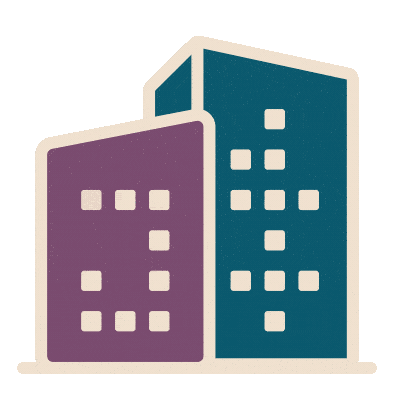Gala Magriñá takes a holistic approach to WELL
As principal and founder of her own design firm, Gala Magriñá likes to take a holistic approach to design, incorporating elements from various disciplines to help achieve clients’ visions and goals.
That’s why, when she heard about the WELL AP, she thought the WELL approach would be an excellent tool to add to her skillset.
Having already earned certifications in holistic interior design and Feng Shui, Gala aimed to branch out. Below, she shares her story of deepening and broadening her people-first design education and practice.
1. How did you first hear about the WELL AP? What got you excited enough about it to apply, study and take the test?
In 2020, during the first days of COVID lockdown, I got an email about the WELL AP. Having already received more energetic based wellness certifications in holistic interior design and Feng Shui, I thought this would be a great opportunity to round out my wellness based interior design education.
2. What’s one way becoming a WELL AP has impacted your life and/or career?
Studying for the WELL AP exam and continuing with my education credits really keeps me informed of everything going on in the environmental wellness world, which is a passion of mine. I feel like I’m part of a growing community that both understands and acknowledges our spaces have a tremendous impact on us. I want to apply all these findings to real life designs for our clients.
3. What are some things you’ve been able to do (or you plan to do) as a WELL AP you couldn’t before? Why are those things important to you?
As a WELL AP, I can speak more confidently to potential clients about the importance of things like good light, low toxin environments, good air and the intentionality in the design of a space. My training as a WELL AP helped me better understand how these things link to human health and well-being, so I can pass that knowledge on to my clients.
4. Did anything about the WELL AP surprise you? What was it? How would you prepare WELL AP candidates for that?
I was surprised at how technical the exam was. Studying for it brought me back to my college days understanding and memorizing key concepts with index cards and A LOT of coffee!
5. What’s something about the WELL AP–or the WELL movement in general–that isn’t often discussed, but you think deserves more attention?
Through all my various training and personal and professional experiences, it’s wild to me that every interior designer, architect or contractor isn’t being trained in these concepts. They are so real and so important, and yet buildings are going up every day with poor lighting, ventilation, materials, etc. Knowing what we know about the impact of spaces on human health and well-being, this should not be the case.
6. Do you have any advice you’d give potential WELL AP candidates?
Get the certification. This isn’t the dominant way of looking at design yet, but soon this will be the way of building and designing spaces.
7. What does well-being mean to you? How do you incorporate it into your life and routine?
Well-being means being very conscious and intentional about the way I live my life. I try to be in sync as much as possible with the Universe, so life becomes easy and effortless and I am right where I need to be, doing exactly what I need to be doing, to help the world evolve in a better way. In terms of personal self-care, it means practicing my twice daily meditation, exercising, eating right and taking time for myself to read, write and reflect on life. And for someone like me who is highly sensitive to their environment, it means creating a home and office space that is healthy, happy and nurturing.
8. Is there a specific WELL concept, feature or set of features that have really resonated with you and that you’ve incorporated into your own life?
Because of my other more energy based certifications, I really enjoyed WELL’s Mind and Lighting concepts. So much of our well-being begins with those two things, and in the interior design work we do in office spaces, those two seem to be the most often overlooked. Access to natural light in New York City offices can be very difficult to achieve for all employees, and yet it is so important, because it is one of the few connections we have to nature throughout the day.
9. How do you think COVID-19 has impacted your WELL AP practice and approach? How do you think that will change going forward?
Because of the COVID lockdown, I believe that people have become more aware of their surroundings and how they impact their well-being. So the needle is moving forward. I think that in office and commercial spaces, air has become a huge focus for obvious reasons, and WELL does a wonderful job of helping to ensure good air for all on a level I haven’t seen elsewhere. Good air in commercial spaces is going to be a huge factor that heavily weighs on employees’ personal comfort and sense of security when returning to the office. Employers need to get it right.







